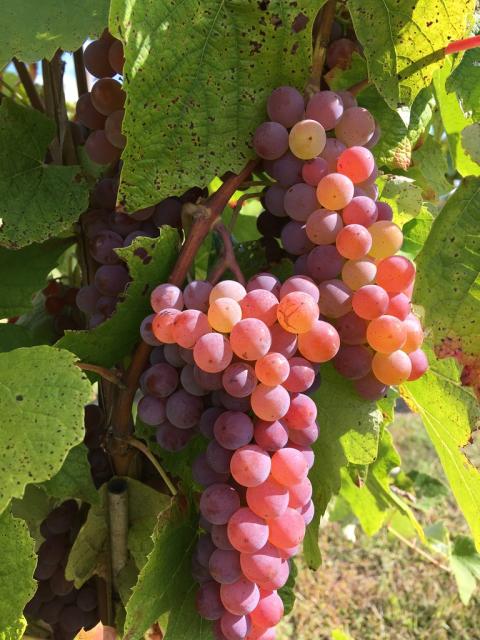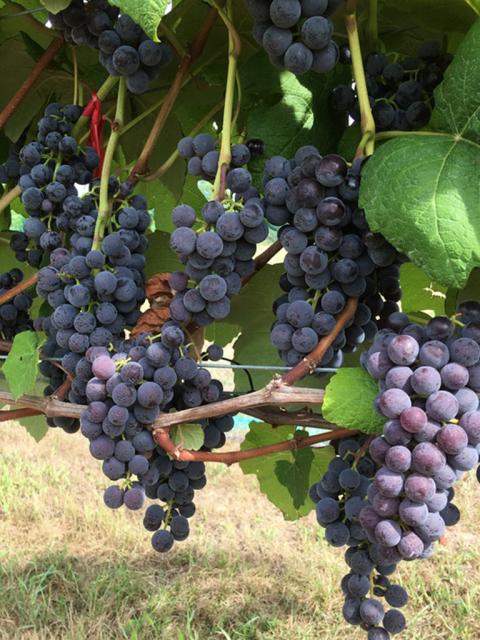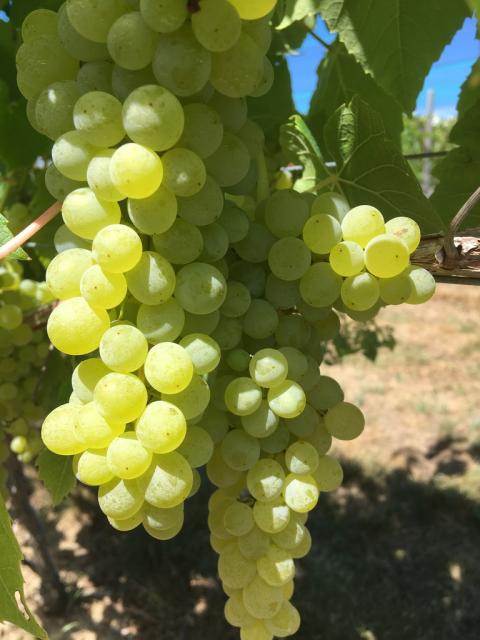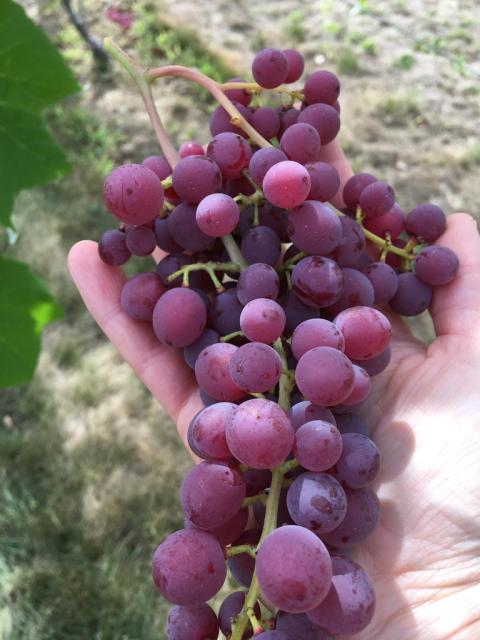Key Findings

Installation of a table grape vineyard requires considerable up-front investment and vines bear fruit after 2-3 years.
Vines planted using VSP training systems reached harvest maturity at least one year sooner than Munson-trained vines, resulting in an earlier yield. Munson-trained vines had higher annual yields once established.
Mars and Canadice varieties showed the most promise for commercial production in the region. Vanessa and Lakemont produced high quality fruit but were susceptible to downy and powdery mildews. Cracking and uneven ripening were frequently seen with Reliance and Concord Seedless, and Marquis and Thomcord showed very poor vigor and winter survival.
About the Co-Author
Becky Sideman, professor, Agriculture, Nutrition, and Food Systems; follow the UNH Sideman Lab on Instagram, UNH Sideman Lab website
Contact information: Becky.Sideman@unh.edu, 603-862-3203
This research was published in the INSPIRED: A Publication of the New Hampshire Agricultural Experiment Station (Summer 2022)
Researchers: B. Sideman, G. Hamilton, A. Chandrakala and M. Lima
Table grapes are a relatively new crop for the Northeast. Several new varieties – released since the 1970s – may be better adapted to our climate than the typical table grapes grown in California. In New Hampshire, the number of acres of grapes has risen since 2017, when farm sales of mostly wine grapes were valued at $385,000. The specific cultivars of table grapes grown and the way their vines are managed can impact productivity, fruit quality and disease susceptibility.
Vineyard establishment
In 2015, eight seedless table grape varieties were planted at the Woodman Horticultural Research Farm. The varieties were cultivated using two vine training systems: Vertical-Shoot Positioning (VSP) and Munson (M). Eight cultivars were planted in each of 12 rows and each plot contained three vines, which were spaced 8 feet apart within rows spaced 10 feet apart. Poles were placed between each plot, 24 feet apart, and the vines were fertilized with 0.1 oz actual nitrogen (N) per vine in 2016, 0.2 oz actual N in 2017, and 0.4 oz actual N from 2019–21. In September 2017, the aisles were tilled and fescue was seeded to establish permanent sod aisles.
Weed management was accomplished mechanically, with occasional applications of glyphosate or paraquat. Fungal diseases were managed with a very minimal schedule (1-2 fungicide applications per season) from 2016–18, and then with a more typical schedule (7-9 applications per season) from 2019–21. Diseases, including anthracnose, downy mildew, powdery mildew and black rot, were evaluated when diagnosed in the vineyard. Yield was measured annually for all fruiting vines.
Mortality rates, observed diseases and harvesting
The highest mortality and lowest vigor were observed for Thomcord, while Lakemont and Marquis had intermediate rates of mortality and vigor. The remaining varieties had 100 percent winter survival and showed good vigor throughout the trial. In the spring of 2017, all dead vines from the preceding fall were removed and replaced. More vines died during winter 2018–19, possibly because they were weakened by severe anthracnose and downy mildew in 2018.
Very low levels of black rot were observed in the vineyard, with no significant differences between cultivars. Moderate levels of anthracnose have been observed for the varieties Marquis, Thomcord and Reliance. Downy mildew has been by far the most damaging disease present, and the cultivars Lakemont, Marquis and Thomcord showed more symptoms than other varieties. Powdery mildew was also present in 2016, with Marquis showing significantly more symptoms than most cultivars, and Canadice, Concord Seedless and Mars remaining nearly symptom-free.
By 2017, all vines produced marketable yields and fruit was harvested over three weeks every year from 2017–21. Researchers measured Brix (for soluble solids content) to determine harvest maturity and began harvesting at 18°Brix. Reliance, Thomcord, Vanessa and Lakemont were the earliest to mature, and Mars and Marquis were among the last to mature.
Figure 1 show the yields for varieties and years across all management systems and Figure 2 shows yields by system.




From left, Canadice, Mars, Lakemont and Vanessa seedless table grapes.
Figure 2. Mean yields (lbs/vine) for seedless table grapes trained to Munson and Vertical-Shoot Positioning (VSP) training systems in Durham, NH.
Note: Means include all varieties shown in Figure 1. Thomcord and Marquis vines were removed from the vineyard in spring 2020. Asterisks (*) indicate years when a significant (p<0.05) difference between systems was observed.
